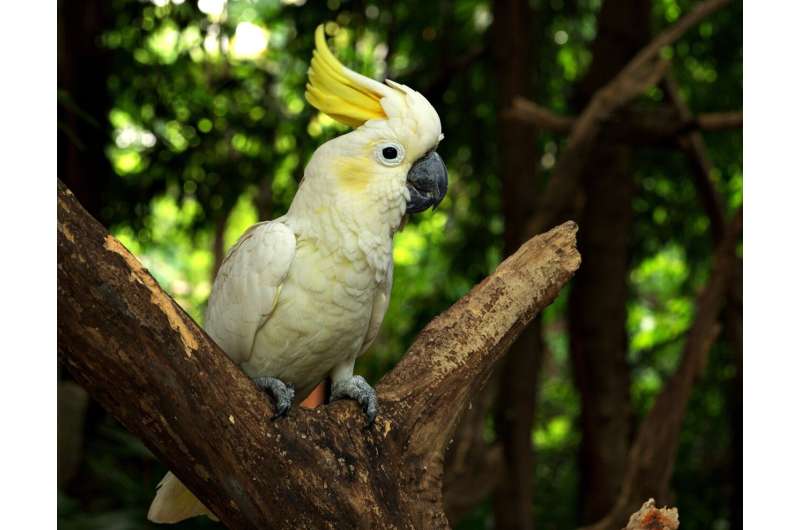September 3, 2021 report
Wild cockatoos observed making and using tools to eat sea mango pits

A team of researchers from the University of Vienna working with a colleague at the Indonesian Institute of Sciences has observed wild Goffin's cockatoos making and using tools to crack open and eat sea mangos—the first-ever example of a wild non-primate making and using a set of tools. They've published their observations in the journal Current Biology.
To learn more about wild cockatoos, the researchers captured multiple wild specimens and placed them in a temporary aviary on one of Indonesia's islands. This allowed them to study the birds in the wild without having to venture into the jungle. As part of their observation process, they offered their captured birds sea mangos, a fruit that is toxic to humans. The birds are the only known creatures that eat sea mangos, and notably, also crack open its hard pit and eat the pulpy material inside.
As they observed the birds, several of the older members of the group grabbed a sea mango and flew up into a tree with it. Then, the birds used their tongues and beaks to break off strips of wood from tree branches and then to fashion them into tools. The researchers found that the birds actually made three different types of tools, each with a different purpose.
One strip was sharpened and then used like a knife to cut open the pit covering. Another was formed into a wedge—the bird would drive it into a natural crack in a pit, forcing it to widen. Next, the bird would craft a spoon-shaped tool which it used, quite naturally, to dig out the pulpy material inside and then to drop its contents into its mouth. After watching the birds in action, the researchers collected several of the discarded tools and brought them into their lab for study.
The researchers noted also that only the older members of the group created and used the tools—the younger members ate the fruit without cracking open the pit. This, the researchers suggest, indicates that tool-making in wild cockatoos is a behavior learned from other, presumably older, cockatoos. The team also witnessed another cockatoo in a tree near the aviary pushing a twig against a sea mango, apparently attempting to mimic the older birds in the aviary. They also found discarded tools when they scanned the ground beneath wild birds in the jungle.
More information: Mark O'Hara et al, Wild Goffin's cockatoos flexibly manufacture and use tool sets, Current Biology (2021). DOI: 10.1016/j.cub.2021.08.009
Journal information: Current Biology
© 2021 Science X Network





















